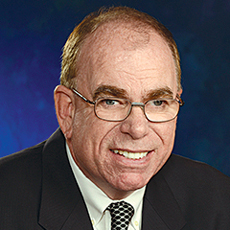
Spring is in the air. So, too, is provider angst about Medicare’s looming Patient-Driven Payment Model, better known as PDPM.
Given that Medicare is contributing more to most skilled care facility budgets these days, is it any surprise that many providers are worried about what changes will bring?
The Centers for Medicare & Medicaid Services is promoting this updated system for classifying residents and care payments as a change that will ensure two benefits. The first is better care. The second is reduced costs. Of course, anyone who thinks those two goals will receive equal treatment is either naïve, or not paying attention.
The unavoidable reality is that Medicare as it now exists is on a collision course with the poor house. By the government’s own estimate, the program will become insolvent in 2026, a mere seven years from now. So there’s that.
Speaking of looming deadlines, PDPM is scheduled to be rolled out October 1. That’s less than half a year away.
Operators continue to express more than a fair amount of uncertainty about how things will really play out. Some are predicting that PDPM will make it more financially viable to swim upstream. By that, I mean many will consider offering increasingly complex medical care for patients who until recently would still be hospitalized.
There is also a school of thought that rehab care, which has been a boon to many an operator’s bottom line, will play less of a role.
Regarding these two possibilities, it’s probably too early to tell. After all, there are still guidelines and some pending rules to be released. And as always, the proverbial devil is in the details.
But if past behavior is any indication of future performance, I can boldly predict two things we will absolutely see under PDPM.
The first is that providers will find hidden funding streams in the new rules and exploit them to the absolute limit. For this, the industry owes no apology.
After all, I don’t see the dozens of Fortune 500 companies that are paying no 2018 federal taxes apologizing. This august list is headed by Amazon Inc., which actually received a tax refund, despite generating more than $11 billion in profits. These firms had no qualms about playing with tax credits, shifting profits elsewhere and taking advantage of other provisions in the tax code that saved them billions of dollars.
As for their collective response when questioned about the seeming incongruity, it amounted to this: We played by the rules that exist. If you don’t like it, tough.
OK, they only implied the second part. But the first point still stands. And skilled care operators who play by the rules and find windfalls along the way need not even pretend to be sorry.
Which brings us to prediction No. 2: Once the government realizes the industry has located new funding geysers, you can be sure regulators will do everything possible to shut them down — or at least limit their impact.
And for that response, the government need not apologize. After all, these are taxpayer dollars we are talking about. And CMS has a fiduciary responsibility of its own: namely, to make sure the healthcare-related funds it doles out are not being used in wasteful or sketchy ways.
So if you don’t learn anything else about what PDPM will deliver, know this: The industry will push the limits of funding creativity, while the government will crack down on the resulting windfalls.
Everything else is, well, everything else.
John O’Connor is McKnight’s Editorial Director.




